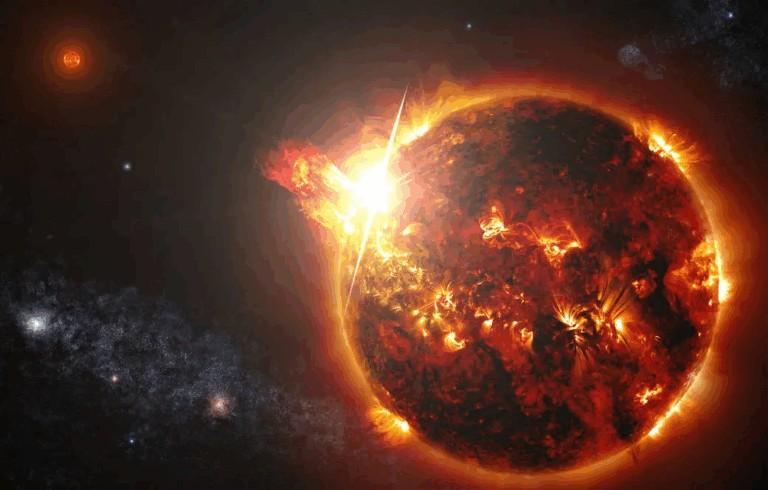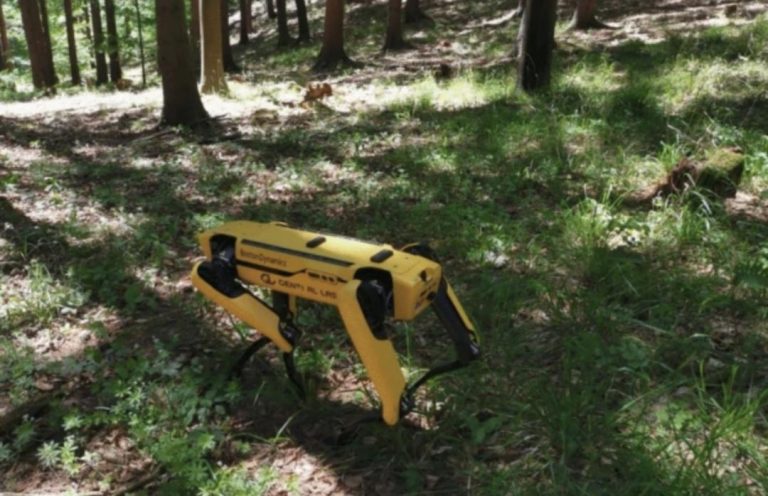
Astronomers detect first-ever coronal storm on a distant star
The universe is full of mysteries waiting to be unraveled, and astronomers have just made a groundbreaking discovery that is set to reshape our understanding of stellar activity. For the first time ever, scientists have detected a coronal storm on a distant star, marking a significant milestone in the field of astrophysics. The massive coronal mass ejection was observed on the red dwarf star StKM 1‑1262, and the findings have left the scientific community abuzz with excitement.
The discovery was made possible by the LOFAR (Low Frequency Array) telescope, a powerful radio telescope that is capable of detecting even the faintest signals from distant stars. The LOFAR telescope is a network of radio antennas spread across Europe, working together to form a single, powerful telescope. It is designed to study the universe in unprecedented detail, and this latest discovery is a testament to its capabilities.
The coronal mass ejection (CME) that was detected on StKM 1‑1262 is a massive burst of energy that is released from the star’s outer atmosphere, known as the corona. This type of event is not uncommon on our own Sun, but the CME detected on StKM 1‑1262 is unlike anything that has been seen before. It is estimated to be around 10,000 times stronger than typical solar storms, making it a truly unprecedented event.
The implications of this discovery are far-reaching and have significant consequences for our understanding of stellar activity. Red dwarf stars like StKM 1‑1262 are the most common type of star in the universe, and they are often considered to be potential hosts for planets that could support life. However, the discovery of such a massive coronal storm raises new questions about the habitability of planets orbiting these stars.
Coronal mass ejections are known to have a significant impact on the surrounding space environment, and they can potentially strip away the atmospheres of nearby planets. This makes it difficult for life to thrive on planets that are orbiting stars that are prone to such violent outbursts. The detection of a coronal storm on StKM 1‑1262 suggests that red dwarf stars may be more volatile than previously thought, which could have significant implications for the search for life beyond our solar system.
The discovery of the coronal storm on StKM 1‑1262 is also a reminder of the awe-inspiring power of the universe. The energy released by the CME is estimated to be around 10^32 Joules, which is an almost unimaginable amount of energy. To put this into perspective, the total energy consumption of human civilization in a year is around 10^22 Joules, which means that the CME released around 10,000 times more energy than human civilization uses in an entire year.
The detection of the coronal storm on StKM 1‑1262 is a significant milestone in the field of astrophysics, and it marks the first time that such an event has been detected on a star beyond our own Sun. The finding is a testament to the capabilities of the LOFAR telescope and the dedication of the scientists who are working to unravel the mysteries of the universe.
As scientists continue to study the coronal storm on StKM 1‑1262, they are likely to gain a deeper understanding of the underlying mechanisms that drive such events. This could lead to new insights into the behavior of red dwarf stars and the potential for life to exist on planets that orbit them. The discovery is also a reminder of the importance of continued investment in astronomical research, as it is through such studies that we can gain a deeper understanding of the universe and our place within it.
In conclusion, the detection of a coronal storm on the distant star StKM 1‑1262 is a groundbreaking discovery that is set to reshape our understanding of stellar activity. The finding has significant implications for the search for life beyond our solar system and highlights the importance of continued research into the behavior of red dwarf stars. As scientists continue to study this event, they are likely to gain new insights into the underlying mechanisms that drive such events, and this could lead to a deeper understanding of the universe and our place within it.
News Source: https://www.breezyscroll.com/space/first-coronal-storm-distant-star-discovery/






